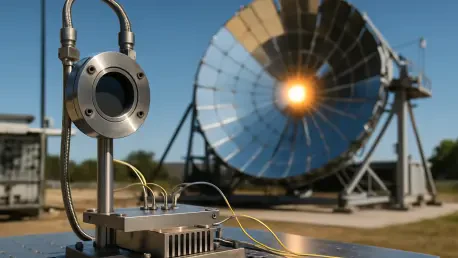In the realm of renewable energy, concentrated solar thermal (CST) systems stand out as a powerful technology capable of reaching staggering temperatures up to 2000 K, making them indispensable for high-temperature industrial and chemical applications. This incredible potential, however, hinges on the ability to accurately measure high heat flux, a critical factor in evaluating the optical performance of these systems. Metrics such as concentration ratio and optical efficiency depend on precise data to optimize energy capture and conversion. As the demand for sustainable energy solutions grows, the challenges and breakthroughs in flux measurement have taken center stage. Researchers and engineers are pushing boundaries to refine techniques that can withstand extreme conditions while delivering reliable results. This exploration into the latest methodologies and tools reveals a field ripe with innovation, addressing both longstanding hurdles and emerging opportunities in solar energy research.
Innovations in Measurement Techniques
The measurement of concentrated solar flux has evolved significantly, with two primary approaches—direct and indirect methods—shaping the landscape of CST system analysis. Direct methods typically employ heat flux gauges positioned on stationary or moving targets to capture data straight from the source, offering a straightforward way to gauge solar intensity. On the other hand, indirect methods have gained traction for their enhanced precision, utilizing a combination of CCD or CMOS cameras alongside Lambertian targets and heat flux gauges to map solar radiation with remarkable detail. These indirect techniques excel at identifying hot spots and providing comprehensive flux distribution insights, which are vital for optimizing system performance. The preference for indirect approaches stems from their superior resolution, enabling a deeper understanding of how solar energy is concentrated and absorbed. As technology advances, the integration of sophisticated imaging and calibration processes continues to redefine accuracy standards in this critical area of solar research.
Overcoming Challenges and Future Prospects
Despite the progress, measuring high heat flux in CST systems remains fraught with challenges that demand innovative solutions. Calibration of sensors under real-world solar conditions often proves difficult, as environmental factors like weather variability can skew results, while the durability of instruments exposed to extreme heat poses another persistent issue. Balancing the cost of advanced measurement tools with the need for precision further complicates the equation, requiring careful consideration of trade-offs. Looking back, the field saw remarkable strides as indirect methods emerged as a preferred choice due to their detailed data output, while comparisons of heat flux gauges like Gardon radiometers and calorimeters highlighted the unique strengths and limitations of each. Moving forward, the focus should be on enhancing sensor technology and refining calibration techniques to ensure reliability across diverse conditions. Addressing these hurdles through sustained research and development will be crucial to unlocking the full potential of solar thermal systems in the years ahead.









